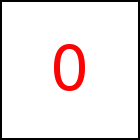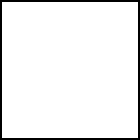acceleration Library Method
Short Description: Specify Acceleration as Vector
Signature: t.acceleration (a) or (x,y,z) or (x,y)
Group: Motion
Class: transition Class
Explicitly sets the acceleration used for a motion with constant acceleration.
Please refer to Motions for an explanation of
motion with constant acceleration.
Default acceleration is zero. This means that the objects
moves with constant speed throughout the transition.
Sample HTML
element with id="sample"
Acceleration can be given as a scalar value a or as a 2D vector
x,y or 3D vector x,y,z. In case of a scalar the acceleration
works towards (or against if a< 0) the direction
of the motion.
I.e. if the acceleration is positive velocity increases throughout
the transition and decreases for negative acceleration.
taccgl.actor("sample") . to({oy:500}). dur(5). acceleration(30) . start() | RUN |
taccgl.actor("sample") . to({oy:500}). dur(5). acceleration(-30). start() | RUN |
taccgl.actor("sample") . to({oy:500}). dur(5). acceleration(40). start() | RUN |
taccgl.actor("sample") . to({ox:-350}). dur(5). acceleration(30) . start() | RUN |
taccgl.actor("sample") . to({ox:-350}). dur(5). acceleration(-30). start() | RUN |
taccgl™ determines the begin and end velocity automatically based on
the start and end point, on the duration and the acceleration.
So typically if the acceleration is increased taccgl™ automatically
reduces the starting velocity to reach the end point within
the specified duration.
Note that either starting or end point or both have to be
set (e.g. using from or to). Also the
duration needs to be set before. Also note that the
acceleration may be set just once using one of the functions
acceleration, vBegin, and vEnd.
If the accelecation is increase beyond a certain point, staring velocity
might even get negative:
taccgl.actor("sample") . to({oy:500}). dur(5). acceleration(50). start() | RUN |
taccgl.actor("sample") . to({oy:500}). dur(5). acceleration(80). start() | RUN |
Acceleration can be given in vector form. If a 2D vector is given
it is extended to 3D by adding z=0. The examples below show various
values and directions for the initial velocity and the acceleration.
If acceleration is given in vector form start and end point of a motion
can be identical (2nd example below).
taccgl.actor("ball") . to({ox:-500}). dur(2). acceleration (0,500,0). start() | RUN |
taccgl.actor("ball") . dur(2). acceleration (0,500,0). start() | RUN |
taccgl.actor("ball") . to({ox:-500}). dur(2). acceleration (0,0,-4000). start() | RUN |
taccgl.actor("ball") . to({ox:-500}). dur(2). acceleration (1500,3000,8000). start() | RUN |
| 






